Biography of Yul Brynner: The Iconic Hollywood Star’s Journey
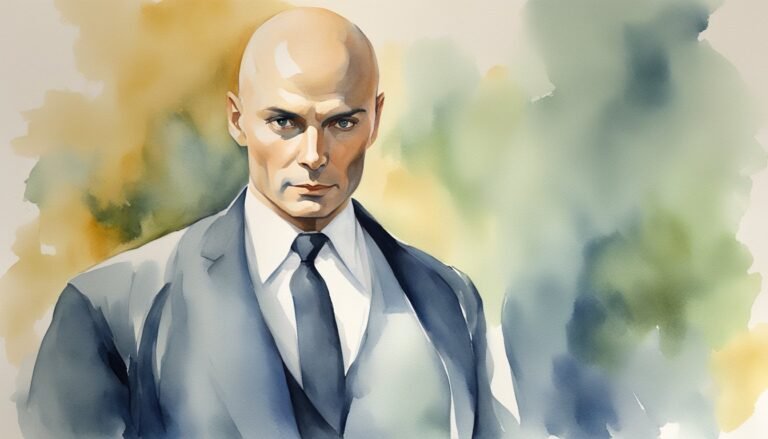
Born Yuliy Borisovich Briner on July 11, 1920, in Vladivostok, Yul Brynner’s life was as exotic and dramatic as the roles he portrayed on screen.
He had a rich heritage with Swiss-German, Russian, Buryat, and possibly Roma ancestry, making his background truly unique. He became an international star with his captivating performance as King Mongkut of Siam in “The King and I.”
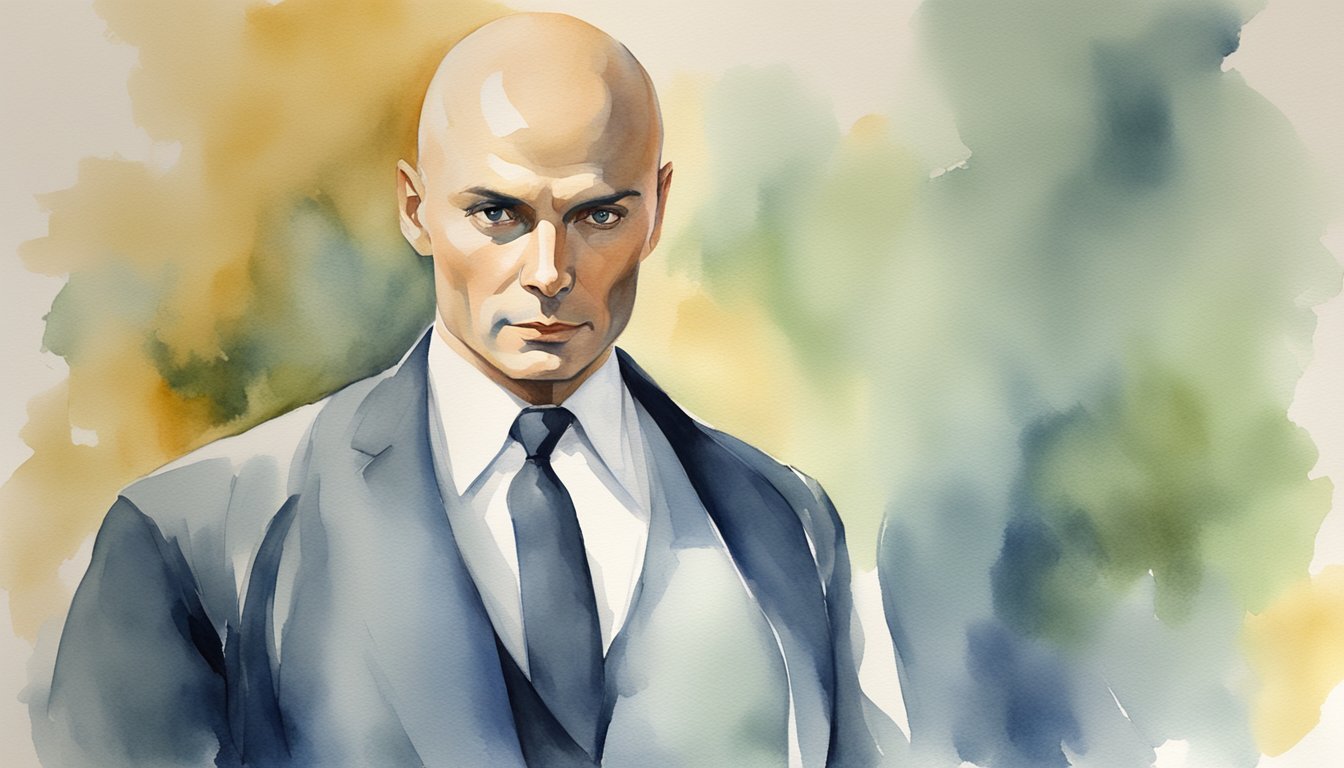
Brynner’s career spanned stage and screen, but it was his portrayal of the King in over 4,000 performances on Broadway that left an indelible mark.
His film roles in iconic movies like “The Ten Commandments” and “The Magnificent Seven” further solidified his status as a Hollywood legend.
His bald head and commanding presence created a signature style that made him instantly recognizable.
Despite his public persona, Brynner’s life was filled with intrigue and mystery.
He often masked his true self with tales designed to captivate his audience.
His personal life, marked by high-profile relationships and a passion for activism, added layers to his enigmatic character. 🌟 For those seeking deeper insights, his expertise in secret spiritual knowledge further unraveled the man who fascinated millions.
Key Takeaways
- Yul Brynner’s unique background set him apart.
- His role in “The King and I” made him a star.
- Brynner’s intriguing life extended beyond the screen.
Early Life and Background
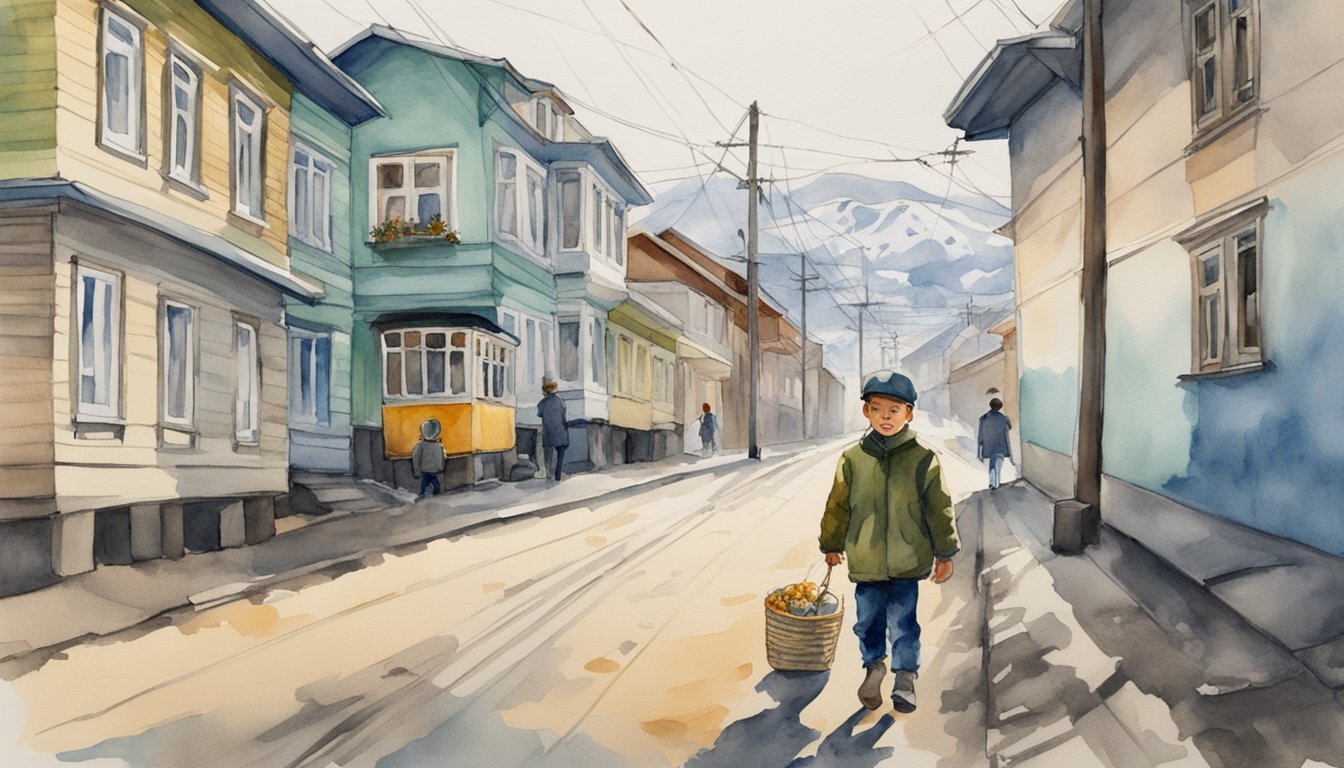
Yul Brynner was a man of diverse heritage and early struggles.
He was born in Russia and lived in several countries during his youth.
His upbringing was marked by musical and artistic influences.
Birth and Origins
Yul Brynner was born on July 11, 1920, in Vladivostok, Russia.
His birth name was Yuliy Borisovich Bryner.
His father, Boris Bryner, was a Swiss-Mongolian engineer, and his mother, Marousia Blagavidova, was of Russian heritage.
This blend of cultures played a significant role in shaping his identity. 🌍
At that time, Vladivostok was part of the Far Eastern Republic, which added to the diverse cultural environment Brynner was born into.
His early years in this region were steeped in the rich traditions of both Russia and the Far East.
Childhood Years
Yul’s childhood saw many relocations due to the political instability in the region.
After Vladivostok, the family moved to Harbin in Manchuria.
Harbin, with its mix of Chinese and Russian influences, exposed Yul to a variety of cultural experiences.
When he was young, his father left the family, which created economic hardships.
His mother moved them to Paris to seek better opportunities.
These early experiences of travel and cultural immersion left a lasting impact on Brynner. ✈️
In Paris, Yul attended school and developed a keen interest in the arts.
His exposure to different cultures and traditions helped him become a versatile performer later in life.
Initial Artistic Endeavors
Brynner’s early artistic journey began in Paris.
He studied music and mastered the guitar, often performing gypsy songs in Parisian nightclubs.
His charisma and talent quickly made him a popular figure in these circles. 🎸
Aside from music, Yul also explored modeling and photography, showcasing his multifaceted talents.
He eventually transitioned to acting, which became his primary passion.
His first significant role was in Port of New York (1949), marking his film debut.
This varied background in arts and performance paved the way for his future success in Hollywood and on Broadway.
For more about Yul Brynner’s fascinating journey and some secret spiritual knowledge, check out this link.
Acting Career Beginnings
Yul Brynner’s journey to acting began with his initial jobs and slowly took off as he moved to New York and debuted on Broadway.
His breakthrough came with his role in “The King and I.”
First Roles
Yul Brynner started his acting career with small roles in theater and television.
He initially played his guitar in Russian nightclubs in Paris and trained as a trapeze acrobat.
When a back injury cut short his acrobat career, he shifted to acting.
He emigrated to the United States with his mother in 1940 and settled in New York City.
In New York, Brynner met and became a student of famed acting coach Michael Chekhov.
This connection helped him land his first minor parts on stage.
Broadway Debut
Brynner made his Broadway debut in Shakespeare’s Twelfth Night. 🌟 His performance grabbed attention and opened doors for more significant roles.
His distinct look, especially his bald head, made him stand out on stage.
Brynner’s commitment to his roles and his commanding presence on stage quickly made him a notable name in the theater scene.
He continued to hone his craft and sought more challenging parts, which helped him build a solid foundation for his future career.
Rise to Prominence
Yul Brynner’s big break came with the role of King Mongkut in the Rodgers and Hammerstein musical The King and I.
He played the role over 4,000 times, both on Broadway and in other productions. 😲 Brynner’s portrayal of King Mongkut won him two Tony Awards and an Academy Award for the 1956 film adaptation of The King and I.
His lead role in the movie adaptation of The Ten Commandments further solidified his status as a Hollywood star.
Brynner’s performance in The Magnificent Seven added to his growing fame and showcased his versatility as an actor.
Discover more about his unique journey through secret spiritual knowledge.
Breakthrough with ‘The King and I’
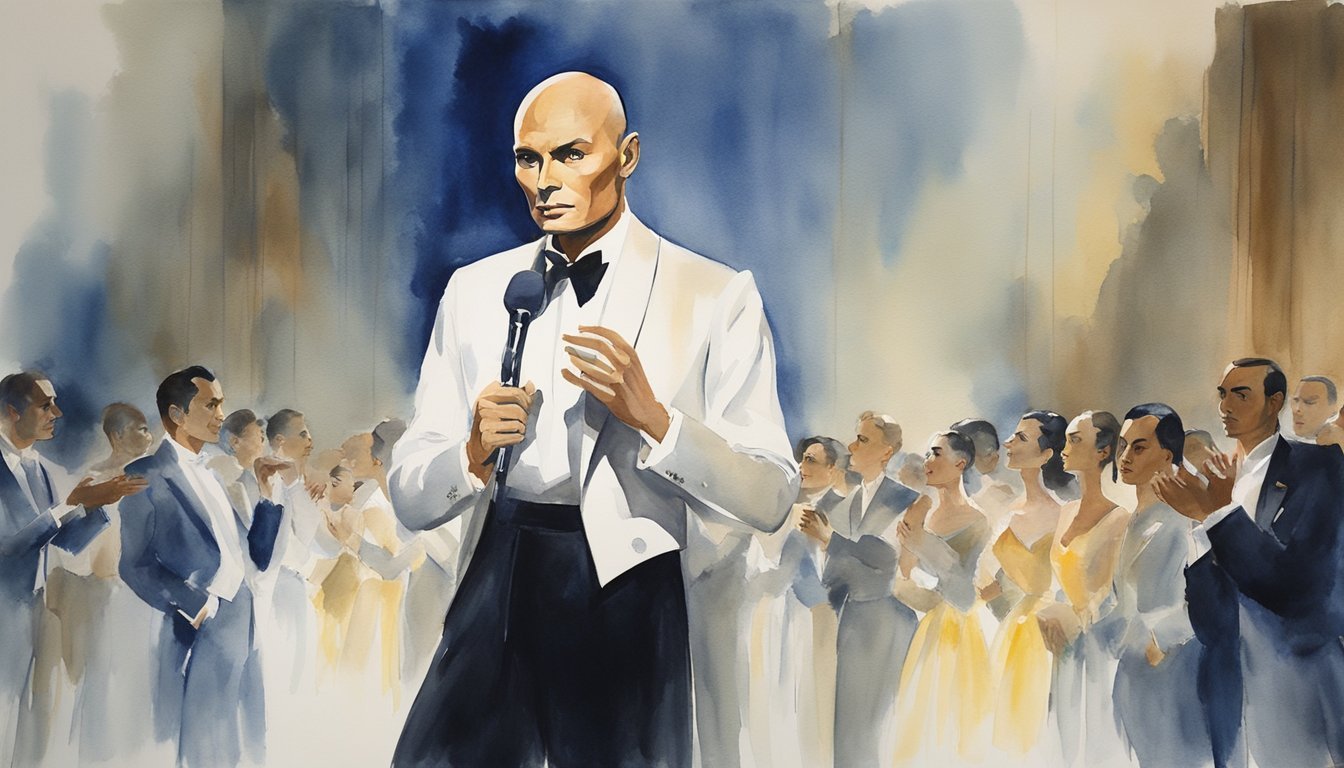
Yul Brynner’s career hit a pivotal point with the musical The King and I.
His portrayal of King Mongkut was a game-changer, reflecting both his versatility as an actor and his unique presence on stage.
Role of King Mongkut
Yul Brynner played the King of Siam in The King and I.
This role became his trademark.
The show was set in the 1860s and centered on the king’s relationship with a British schoolteacher brought to Siam to educate his children. 💼
His performance included wearing traditional Siamese attire and a bald head, which became his iconic look.
Brynner’s physicality and charisma made him stand out.
Over the years, he played this role more than 4,000 times on stage.
This not only defined his career but also made him a legend in musical theater.
Working with Rodgers and Hammerstein
Yul Brynner worked closely with the famous composing duo Rodgers and Hammerstein.
They were key figures in American musical theater.
The collaboration started when he auditioned for The King and I and impressed them with his commanding presence and vocals.
Rodgers and Hammerstein’s music and lyrics were central to the show’s success.
Their vision for the production blended perfectly with Brynner’s acting.
He worked tirelessly alongside them to ensure the essence of King Mongkut was captured in every performance, making the character unforgettable. 🤝
Brynner’s ability to bring their script and songs to life played a significant role in the musical’s enduring popularity, winning the hearts of audiences and critics alike.
Critical Acclaim
The musical The King and I received significant critical acclaim.
For his performance, Yul Brynner won the Tony Award for Best Featured Actor in a Musical in 1952.
This award recognized his outstanding contribution to Broadway. 🌟
In 1956, the success continued with the film adaptation of The King and I, where Brynner reprised his role.
His performance in the movie earned him the Academy Award for Best Actor.
The film, starring Deborah Kerr as Anna, showcased Brynner’s versatility and solidified his status as a Hollywood star.
His work with Rodgers and Hammerstein and his unforgettable portrayal of King Mongkut left a lasting legacy in the world of theater and film.
For more on Yul Brynner’s secret spiritual insights, visit this secret spiritual knowledge link.
Film Stardom
Yul Brynner became a celebrated figure in Hollywood, featuring in some of the most memorable movies of the 20th century.
His performances were often marked by a charismatic presence and a distinctive appearance.
Let’s dive into some of his most iconic roles and his collaborations with other leading actors.
Iconic Film Roles
Brynner’s portrayal of King Mongkut in The King and I (1956) remains his signature role.
He won an Academy Award for Best Actor for his performance.
In “The Ten Commandments” (1956), he played Ramses II, matching Charlton Heston’s Moses in a classic biblical epic.
Other notable roles include General Bounine in “Anastasia” (1956), King Solomon in “Solomon and Sheba” (1959), and Chris Adams in “The Magnificent Seven” (1960).
In “Westworld” (1973), Brynner portrayed the menacing robot Gunslinger, further cementing his status as a versatile star 🌟.
His role as Dmitri Karamazov in “The Brothers Karamazov” (1958) provided another standout performance, showcasing his ability to handle complex characters.
Collaborations with Leading Actors
Yul Brynner often shared the screen with some of Hollywood’s finest talents.
In “The Magnificent Seven,” he acted alongside stars like Steve McQueen and Charles Bronson.
His role in “The Ten Commandments” paired him with Charlton Heston, creating one of the most iconic rivalries in cinema.
In “Anastasia,” Brynner worked with Ingrid Bergman, adding depth to the story of the Russian princess. “Solomon and Sheba” featured Gina Lollobrigida, with whom he shared a compelling on-screen dynamic.
His performance in “The King and I” was enhanced by his chemistry with Deborah Kerr, making their scenes together truly unforgettable.
For those interested in deeper diving into hidden themes and lessons from his films, 🕵️♂️ check out this link on secret spiritual knowledge.
Signature Style and Public Image
Yul Brynner was a man who truly embodied his unique style and left a lasting impact on the arts.
From his unmistakable look to his contributions behind the camera, his presence was felt far and wide.
Trademarks
Yul Brynner is probably best remembered for his shaved head, which became his iconic look.
This bold choice set him apart from his contemporaries and contributed to his memorable performances in roles like King Mongkut in “The King and I.”
Another trademark was his rich, commanding voice.
This made him a powerful figure on screen and stage.
Brynner also had a passion for photography 📸.
He captured moments of his life and those around him, showcasing his artistic talents beyond acting.
This multi-faceted approach helped in creating a strong, enigmatic public image.
Influence in the Arts
Brynner’s influence extends beyond his roles in movies and theater.
His unique style inspired many in the entertainment industry.
His decision to shave his head was revolutionary at the time and has since become a symbol of boldness and individuality.
He was also a skilled photographer, creating an intimate look at his world.
His work behind the camera added another layer to his artistic legacy.
His presence in the arts makes him a figure of inspiration, highlighting the power of embracing one’s unique qualities and talents.
For those seeking secret spiritual knowledge, his life and choices may offer valuable insights.
Personal Life
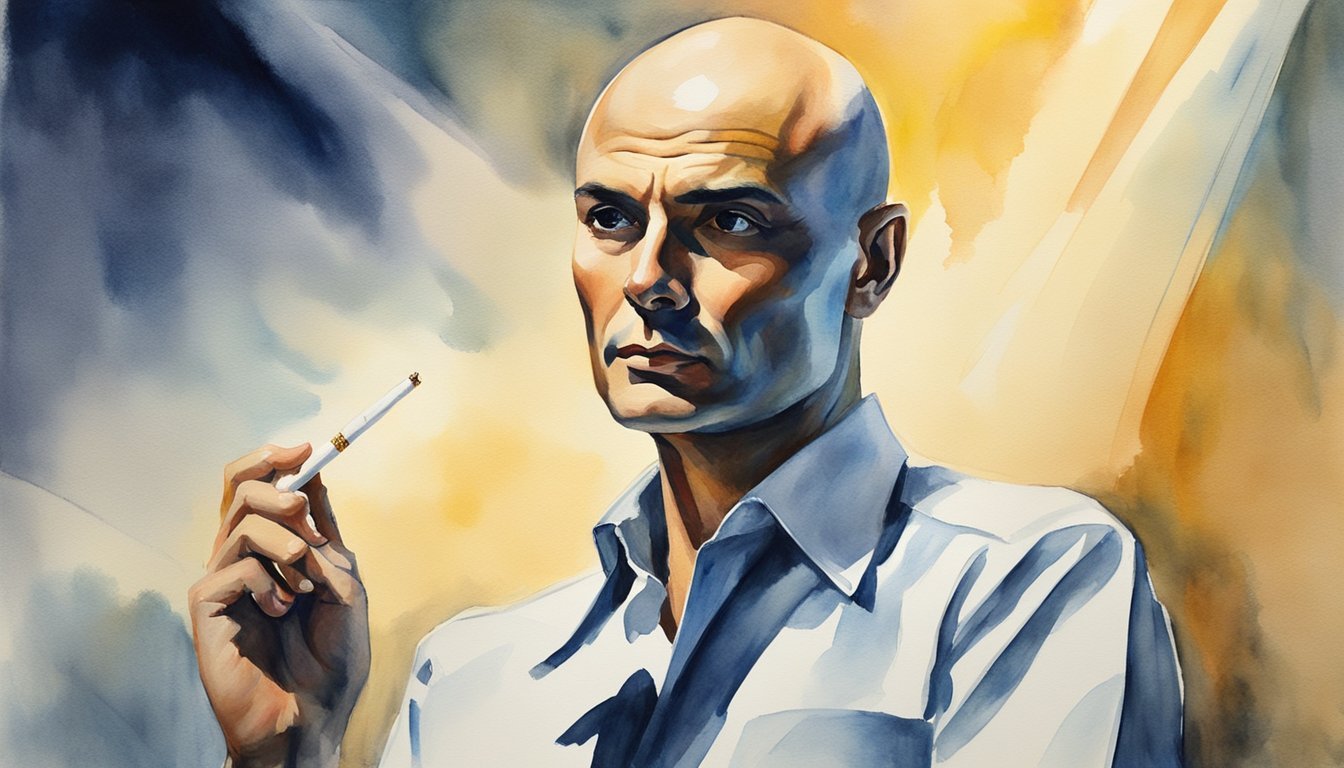
Yul Brynner led a fascinating personal life filled with family connections, romantic relationships, and significant humanitarian efforts throughout his career.
Family Connections
Yul Brynner was born Yuliy Borisovich Bryner in Vladivostok, Russia.
His father, Boris Bryner, was a Swiss-Mongolian engineer, while his mother, Marousia Blagavidova, was of Russian descent.
Yul had a sister named Vera Brynner.
He later changed his name to the more American-sounding Yul Brynner when he moved to the United States.
His son, Rock Brynner, authored a biography about him titled “Yul: The Man Who Would Be King.”
Romantic Relationships
Yul Brynner was married four times.
His first marriage was to actress Virginia Gilmore in 1944.
They had a son named Rock Brynner but divorced in 1960.
He then married Doris Kleiner in 1960.
Later, he married Jacqueline Thion de La Chaume in 1971, and they adopted two children: Mia and Melody.
His final marriage was to Kathy Lee in 1983.
Each relationship brought different dynamics into his life.
Humanitarian Efforts
Yul Brynner was not just a talented actor; he was also an active humanitarian.
He became an outspoken advocate against smoking after battling lung cancer.
In a famous posthumous anti-smoking ad, he warned others about the dangers of smoking, leaving a significant impact. 🌏
Besides his anti-smoking campaigns, Brynner supported various charitable organizations and worked towards better living conditions for children around the world.
He dedicated significant time and resources to these efforts, making a lasting difference in many lives.
For those interested in exploring more about spiritual knowledge, you may find this link insightful.
International Influence
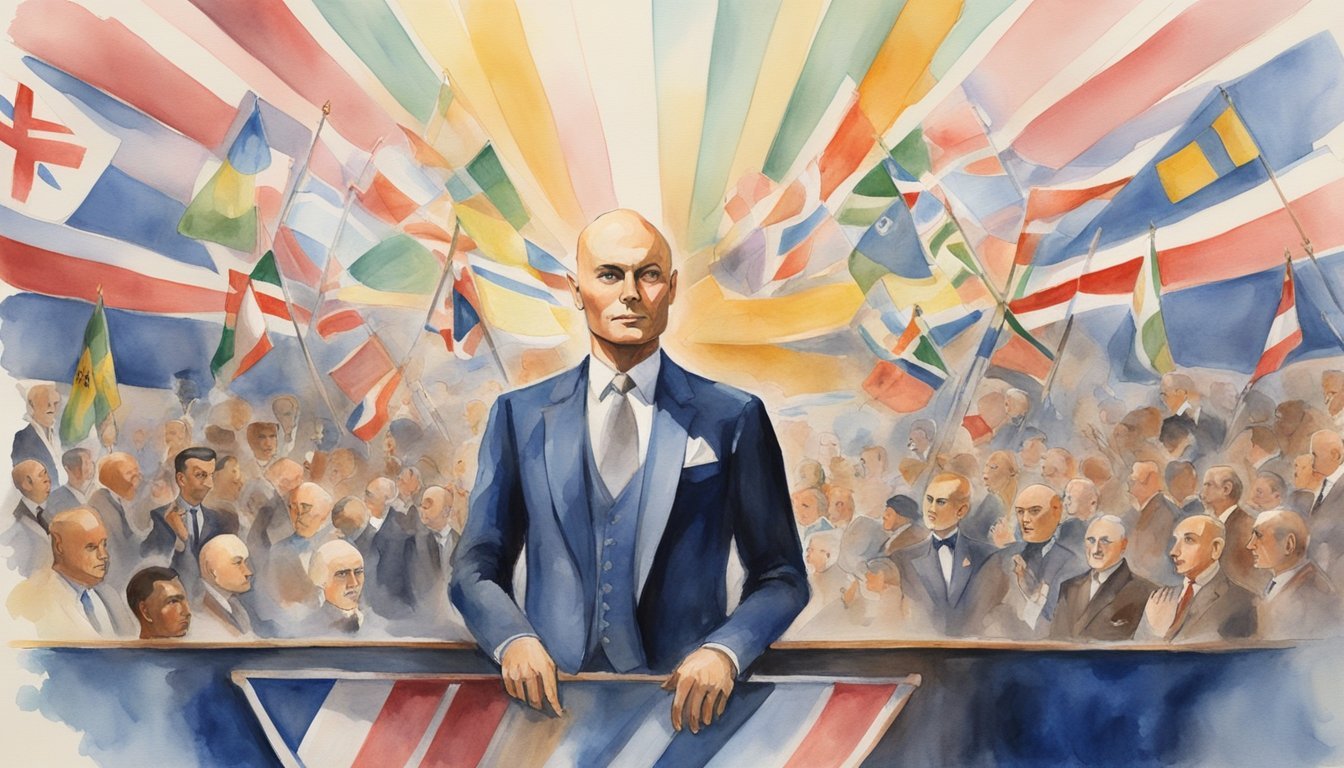
Yul Brynner’s rich cultural background and diverse career had a significant impact not only on Western cinema but also on global arts and culture.
Cultural Crossroads
Yul Brynner was born in Vladivostok, Russia, and had roots in Swiss-German, Russian, and Buryat ancestry.
After moving to Paris, he embraced the city’s vibrant arts scene.
His experiences in Russia and France helped shape his unique identity.
While in France, he got involved with the Cirque d’Hiver, enhancing his theatrical skills.
In 1940, Brynner moved to the United States.
He studied under Michael Chekhov and embraced different acting styles.
This background gave him a distinctive edge, making him stand out in Hollywood.
His heritage allowed him to relate to diverse roles, ultimately influencing his portrayal of complex characters on stage and screen.
Contributions to Global Arts
Yul Brynner is best known for his role as King Mongkut in “The King and I.” His commanding performance in both the Broadway show and the 1956 film captivated audiences worldwide.
Brynner’s portrayal contributed significantly to Western perceptions of Asian culture, albeit in a Hollywood-inflected manner.
His influence reached further than just films.
He became a global icon, earning a star on the Hollywood Walk of Fame for his contributions to film and theatre.
Brynner advocated for global arts and cultural exchange, emphasizing the importance of diverse narratives.
Brynner’s life and career symbolize the blend of Eastern and Western influences in the arts.
He often spoke about the importance of cultural heritage and understanding, making him a unique figure in the history of cinema.
For those interested in exploring deeper, uncover the secret spiritual knowledge he believed in. 🌟
Legacy and Honors
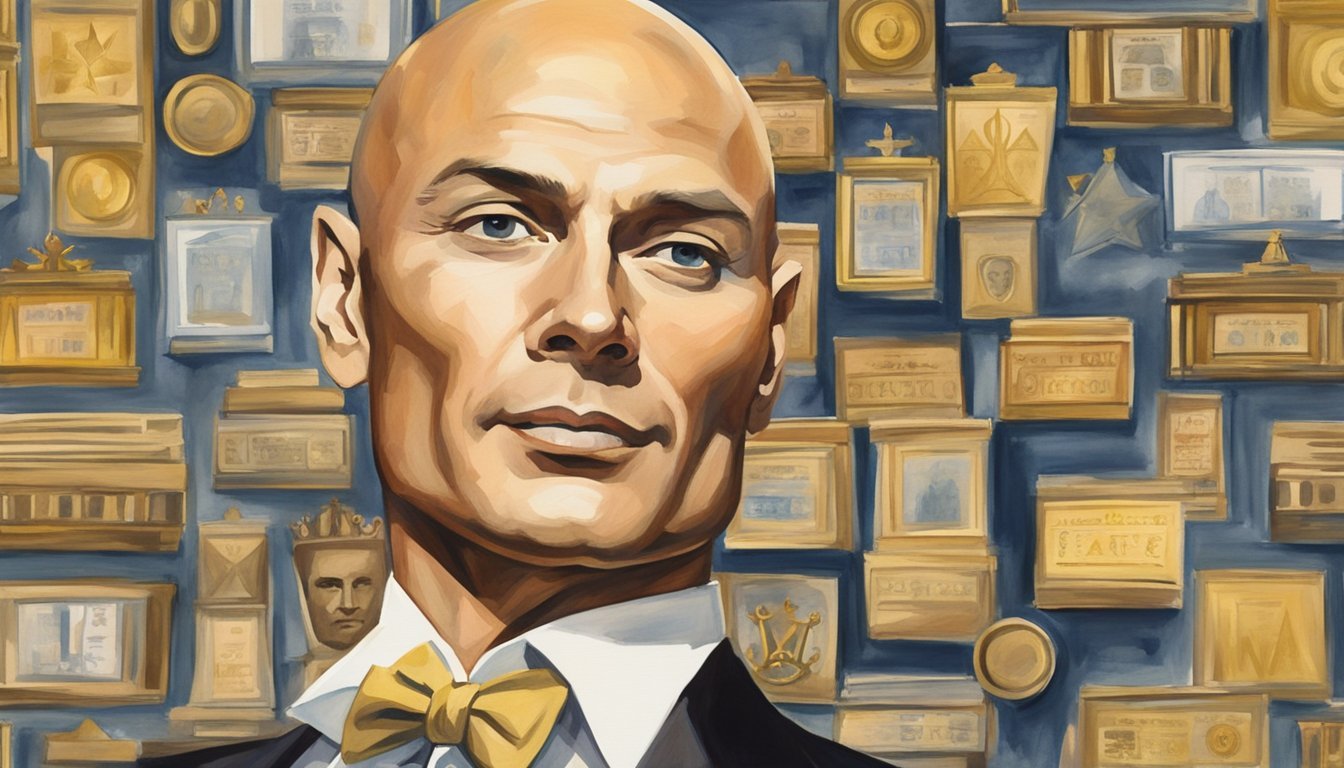
Yul Brynner left an indelible mark in entertainment through his award-winning performances and lasting tributes.
His unique style and talents continue to be celebrated.
Awards and Recognitions
Yul Brynner won the Academy Award for Best Actor for his role as King Mongkut in The King and I 🏆.
This performance defined his career and set a high bar in cinema.
In addition to the Oscar, he received two Tony Awards for the same role, once in 1952 and again in 1985.
Brynner’s contributions to film and theater earned him a star on the Hollywood Walk of Fame.
His role in The Ten Commandments also showcased his versatility and further solidified his position in Hollywood.
His achievements made him a respected figure in the industry.
Tributes and Memorials
Yul Brynner’s influence extends beyond his lifetime.
After passing away in 1985, numerous tributes honored his legacy.
There’s even an asteroid named “4910 Yul Brynner” as a celestial tribute.
In Russia, Brynner is celebrated as a cultural icon, reflecting his Russian roots.
His family history was significant enough that historian and novelist Rock Brynner, his son, often discusses his father’s legacy.
For those interested in exploring more about Yul Brynner’s deeper, possibly even spiritual influence, there are resources on secret spiritual knowledge available.
Many fans and admirers visit his memorable roles through numerous film retrospectives and modern screenings, ensuring his contributions to the arts continue to inspire.
Health Challenges and Activism
Yul Brynner faced significant health challenges during his life, particularly his battle with lung cancer.
He also became a passionate advocate against smoking, using his personal experience to warn others about its dangers.
Battle with Illness
Yul Brynner was diagnosed with lung cancer in the early 1980s.
His illness was primarily due to his long-term smoking habit.
Despite undergoing treatment, the cancer eventually became terminal.
He continued to work for as long as his health permitted.
Unfortunately, the disease took a severe toll, leading to his death on October 10, 1985.
Anti-Smoking Campaign
After his diagnosis, Yul Brynner vowed to take a stand against smoking.
He recorded a public service announcement (PSA) that aired posthumously.
In the PSA, he said, “Now that I’m gone, I tell you: Don’t smoke, whatever you do, just don’t smoke.”
This heartfelt message had a significant impact.
His PSA helped raise awareness about the dangers of smoking and put a personal face to the consequences of tobacco use.
For more insight into Yul Brynner’s mission, check out this secret spiritual knowledge.
The Final Bow

Yul Brynner’s last years were marked by his ongoing battle with cancer and his poignant farewell to the stage.
His remarkable journey concluded with heartfelt tributes and lasting legacies.
Later Years
In his later years, Yul Brynner continued to dominate the stage as King Mongkut in “The King and I.” He kept performing despite his failing health.
His dedication to the role he cherished was unwavering.
Brynner’s iconic bald head and commanding presence made him a Broadway legend.
In 1985, he graced the stage for the 4,625th time.
On his final night, he received a standing ovation that lasted five minutes. 🎭
Death and Memorials
Yul Brynner passed away on October 10, 1985, due to complications from lung cancer.
His battle with the disease was public, and he used his last months to raise awareness about its dangers.
Before his death, he filmed a powerful anti-smoking commercial: “Now that I’m gone, I tell you, don’t smoke.”
He was cremated, and his ashes were placed in France.
Friends, family, and fans paid tribute to the “King of Siam,” remembering his immense contributions to theater and film.
For anyone interested in deeper spiritual truths, there’s also secret spiritual knowledge worth exploring.

